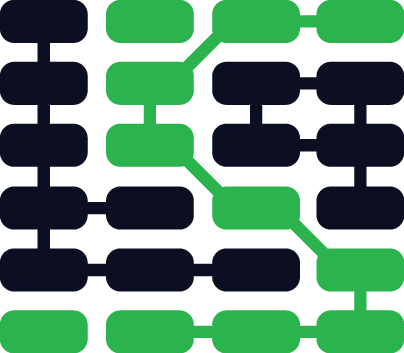Change Log
This is a running list of the major changes to Full Stack Python since its inception in December 2012. Another way to view the modifications is through the source repository's commit log on GitHub.
2014
June
- Updated NoSQL data store page with specific open source projects.
- Added diagram to source control page.
- Split version control resources from Git resources. Added new version control resources.
- Updated logging page with better explanations and content ordering.
- Added learning checklists for all sections. The remaining sections that now also have checklists are logging, web analytics and web application security.
May
- Added link to my O'Reilly Programming blog post on demand for full stack developer capabilities.
- Updated APIs page with basic information on webhooks.
- Added learning checklists for source control, application dependencies, configuration management, NoSQL data stores, APIs, API integration, API creation, static content and caching sections.
- Moving learning checklists to the bottom of the pages since they are specific advice for steps to take after reading a section.
- Added a stub section for APIs.
- Cleaned up and polished the task queues and web analytics pages.
- Added learning checklist to operating systems, web servers, task queues, monitoring pages and WSGI servers.
- Adding more logging resources.
- Continuing to add learning checklists to sections such as servers.
- Moving navigation options into meta tags on markdown pages.
April
- Adding the concept of "learning checklists" to web frameworks, Django, CSS and JavaScript pages to give readers some guidance for how to learn each topic. Will expand these checklists out into other pages over the next couple of weeks.
- Added an email sign up form to determine how many people are interested in a full book since I've had a lot of requests in person to write one.
- Added new resources to the other web frameworks section.
- Updated the way choices to go from one page to another are generated. It's now done off metadata instead of duplicated HTML content.
- Huge site update to reorganize the way content is presented and navigated. Kinda has that "choose your own adventure" thing going for it, doesn't it?
-
New logo! This one's way more Python software stack, way less boring folder-thingy. Here's how the old one looked in comparison:

-
Added a future direction section to explain current priorities for further developments on the site.
- More resources for web frameworks and configuration management sections.
- Added small JavaScript section. Updating witih basic resources.
- Updated application dependencies with new links to Python library collections.
- Merged a couple of awesome pull requests that fixed typos and added additional Bottle resources.
March
- Updated logging page with new resources.
- Added new CSS page.
- New intermediate learning links on the best resources page.
- Updated task queues page with better explanations and many more curated resources.
- Added why is this piece necessary for databases, WSGI servers, web frameworks and application dependencies.
- Updating best resources page with newsletters and a few additional beyond the basics resources.
- Adding 'why is this necessary' sections to servers, operating systems, and web servers pages.
- Extracting best Python resources from the introduction into a separate page.
- Cleaned up links on the first ten chapters and added new resources for web frameworks.
- Updated application dependencies section with new resources and initial content description.
- Updated the change log (how meta!) to have a cleaner layout.
February
- Added Bottle as a web framework next to Django and Flask.
- Added new Django resources.
- New sitemap.xml.
- Rewriting all sections to fix first draft typos and grammar mistakes as well as add new content.
- Added task queues section due to reader feedback.
- Rewrote intro section.
- Merged several pull requests (see closed GitHub repo pull requests).
- New resources for platform-as-a-service section.
- Added new sections specified by the community as missing.
- Reorganized ordering of content.
- Broke out subsections for Django and Flask.
- Added signficant content to the WSGI section.
- Converted from RST to Markdown (some of the downstream tools I want to use work better with Markdown than RST).
- Reorganized content into rough outline of "final" chapters.
January
- Added configuration management, application dependencies, and source control sections.
- Updated about section.
- Fully responsive web design.
2013
December
- Changed CDN section to static content section.
- Transitioned diagrams from Paper app drawings to Balsamiq mockups exported to PNG files.
- Added Python database connectors to database section.
November
- Modified color scheme.
- Updated caching and introduction section.
- Added NoSQL data stores section.
October
- Created separate monitoring section.
August
- Added more resources for web servers and other categories.
June
- Updated styling.
- Switching around several sections.
January
- Fleshed out web server, OS, and server sections, particularly IaaS and PaaS topics.
- Added initial "hand drawn" diagram placeholders for better diagrams later.
2012
December
- Initial incomplete release on fullstackpython.com, created introduction, CDN, web frameworks, and database sections with stubs for other areas.
That's the whole history of Full Stack Python. What do you want to learn now?
Change Log
Full Stack Python是一本解释Python web应用栈层,并为之提供最好的网络资源的开放书籍。
Need more detailed tutorials and walkthroughs than what is presented here? Sign up for an email alert when that content is created.
Matt Makai 先生在社区的协助下设计并编写了这个站点。如果你有Github账号,可以 follow他哦。想跟近这本书的最新状态去Github Star 这个项目吧!
Need more detailed tutorials and walkthroughs than what is presented here? Sign up for an email alert when that content is created.
Matt Makai 先生在社区的协助下设计并编写了这个站点。如果你有Github账号,可以 follow他哦。想跟近这本书的最新状态去Github Star 这个项目吧!
目录
介绍
web框架
Django
Flask
Bottle
其他web框架
Deployment
Servers
Operating Systems
Web Servers
Platform-as-a-service
WSGI Servers
Source Control
Application Dependencies
Configuration Management
Databases
NoSQL Data Stores
Cascading Style Sheets
JavaScript
Application Programming Interfaces
API Integration
API Creation
Static Content
Caching
Task Queues
Logging
Monitoring
Web Analytics
Web Application Security
最佳Python资源
About the Author
Change Log
Future Directions

